SAS Urban Survival Handbook (132 page)
Read SAS Urban Survival Handbook Online
Authors: John Wiseman
Tags: #Health & Fitness, #Reference, #Survival, #Fiction, #Safety, #Self-Help, #Personal & Practical Guides, #General, #Survival Skills

Place your hands, one on top of the other, with the heels of your hands resting above navel. Keep fingers clear.
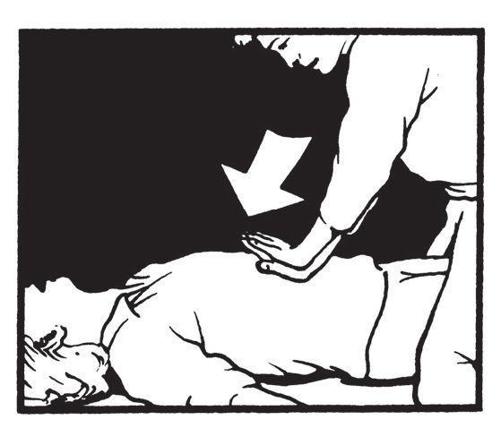
With your arms straight, make quick thrusts upwards and inwards as if up into the centre of the rib cage. Thrusts must be strong enough to dislodge blockage. Repeat up to four times if necessary.
BABY/CHILD (UNCONSCIOUS)
For a child, technique is the same as for adults—but use only one hand and don’t press quite so hard. For a baby, put two fingers of one or both hands between the navel and bottom of breastbone. Press downwards/forwards quickly. Repeat up to four times, if necessary.
CHOKING: CONSCIOUS
Symptoms
- ◑ Casualty may be panicking and clasping throat
- ◑ Casualty cannot speak or make any sound
- ◑ Veins of the face and neck may be ‘bulging’
- ◑ There may be blue discolouration of the lips
- ◑ Casualty obviously cannot breathe or
- ◑ Casualty may stand up and thrash about
- ◑ If there is any breathing, it may be very noisy
IS IT A HEART ATTACK?
- ■
Victim clutches chest, not throat - ■
Casualty (if able to speak) complains of chest pain - ■
Rapid breathing, usually quiet and shallow - ■
Casualty may sit down or slump
If you suspect a heart attack, CALL AN AMBULANCE. See HEART ATTACK
☞
Encourage casualty to cough out the blockage. If they cannot, help them to a chair and bend their head over between their knees so that it is lower than lungs. Slap them sharply between the shoulder blades, using the heel of your hand. Slap four times, if necessary. Check casualty’s mouth to see if blockage is dislodged. Repeat slaps. If blockage is not dislodged, use ‘conscious’ abdominal thrust—HEIMLICH MANOEUVRE ☞
BABY/CHILD (CONSCIOUS)
Lay a child over your lap with head hanging down, supporting child under chest. Use back slaps with the heel of your hand. If blockage is not dislodged, use HEIMLICH MANOEUVRE
☛
For a baby/toddler, use a lot less pressure when slapping. Be prepared to use ☚ ABDOMINAL THRUST if blockage is not dislodged. If you use your fingers to try to remove a blockage from the mouth or throat of a baby/ toddler, be VERY careful not to force the blockage further in.
Heimlich manoeuvre
With a CONSCIOUS choking casualty, stand behind them and put your arms around them. Make a fist of one hand and press it thumb inwards above the navel, but below the breastbone. Clasp your other hand round the first.
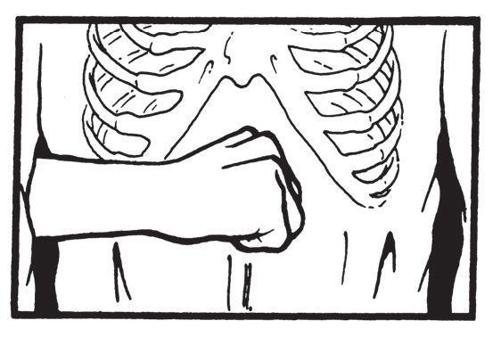
Pull upwards and inwards with a quick movement up to four times. Pressure used should compress the upper abdomen. If there is no response, repeat ☚ BACK SLAPS and return to Heimlich manoeuvre. Check the mouth to see if the blockage has been dislodged.
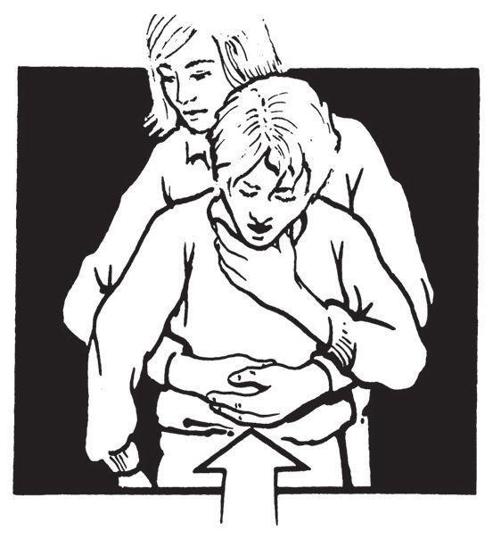
BABY/CHILD (CONSCIOUS)
For a baby, use conventional
☚
ABDOMINAL THRUST. For a child, depending on height, stand or kneel behind them or sit them on your lap. Support the back with one hand and apply the Heimlich manoeuvre with one hand only. Don’t use nearly as much pressure as for an adult, but the pressure must be sufficient to force out the blockage.
REMEMBER
If you are alone, adapt the Heimlich manoeuvre by positioning yourself to use the back of a chair, the post at the bottom of a staircase or any other blunt projection.
SEVERE BLEEDING
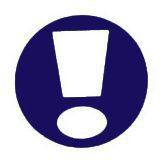 An adult has around 6 litres (11 pints) of circulating blood. The loss of 0.5 litre (1 pint) can cause mild faintness. Loss of 1 litre (2 pints) causes faintness, increased pulse rate and shallow breathing. 1.5 litres (3 pints) leads to collapse, and more than 2.25 litres (4 pints) can be fatal. Immediate steps must be taken to stop blood loss.
An adult has around 6 litres (11 pints) of circulating blood. The loss of 0.5 litre (1 pint) can cause mild faintness. Loss of 1 litre (2 pints) causes faintness, increased pulse rate and shallow breathing. 1.5 litres (3 pints) leads to collapse, and more than 2.25 litres (4 pints) can be fatal. Immediate steps must be taken to stop blood loss.
Bleeding may not be apparent—internal bleeding may occur, particularly after a fall, a blow or a crushing injury. Severe external or internal bleeding often leads to SHOCK ☞ Shock can kill.
Blood releases its own first-aid agent when bleeding occurs. Particles in blood form clots which plug up the wound and stop the flow. If bleeding is heavy, clotting cannot take place but you can help by restricting the flow of blood from a wound. If the wound is small restrict blood flow by:
Direct pressure
Place your finger, hand or a dressing over the wound and press. This squeezes the blood vessels around the wound and cuts the blood supply. Pressure MUST be kept up for at least five to 15 minutes to let clotting take effect.
Ideally you should cover the wound with a sterile dressing, but the priority is to prevent blood loss so use any clean non-fluffy cloth. DON’T lift the dressing up to look underneath.
If no dressing is available, use your hand. Squeeze the edges of a gaping wound together. If the wound is on a limb, raise it above the level of the heart—lay the victim down and prop up head or limbs.
If YOU are wounded and alone, use a free hand to apply direct pressure to a wound—do NOT wait for assistance.
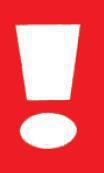
WARNING
If there is anything embedded in the wound—a piece of glass or metal, perhaps—do NOT attempt to remove it. Apply pressure beside the fragment.
If there is more than one serious wound, pads/dressings to control bleeding may be fixed in place with bandages or improvised bandages—but NOT tied so tightly that circulation is restricted.
PRIORITIES
When bleeding is coupled with cessation of breathing, treat both at the same time. This is a double emergency.
Pressure points
If there are multiple lacerations on a limb and a large amount of blood is being lost OR if there is major arterial bleeding (blood is bright red and spurts rhythmically), you MUST act very quickly.
You must find the place where the relevant artery crosses a bone, and apply pressure with your fingers to slow or cut off the flow of blood.
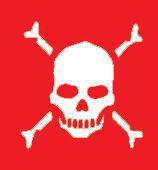
WARNING
Do NOT apply pressure at a pressure point for more than 15 minutes. You are cutting off the blood supply to the tissues.
BLEEDING ARM/HAND
Feel between the muscles on the inner side of the upper arm. Push the artery against the bone, with an inwards/upwards pressure. Watch the bleeding and adjust the position of your fingers until stops.
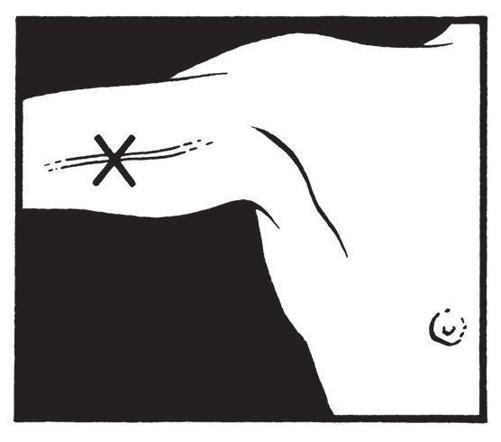
BLEEDING LEG/FOOT
With the casualty lying on the ground, raise the knee of the bleeding limb and apply pressure to the centre of the fold, where the thigh joins the groin. If you can’t find the bone with your fingers, use the heel of your hand. Watch the bleeding and adjust the pressure until it stops.